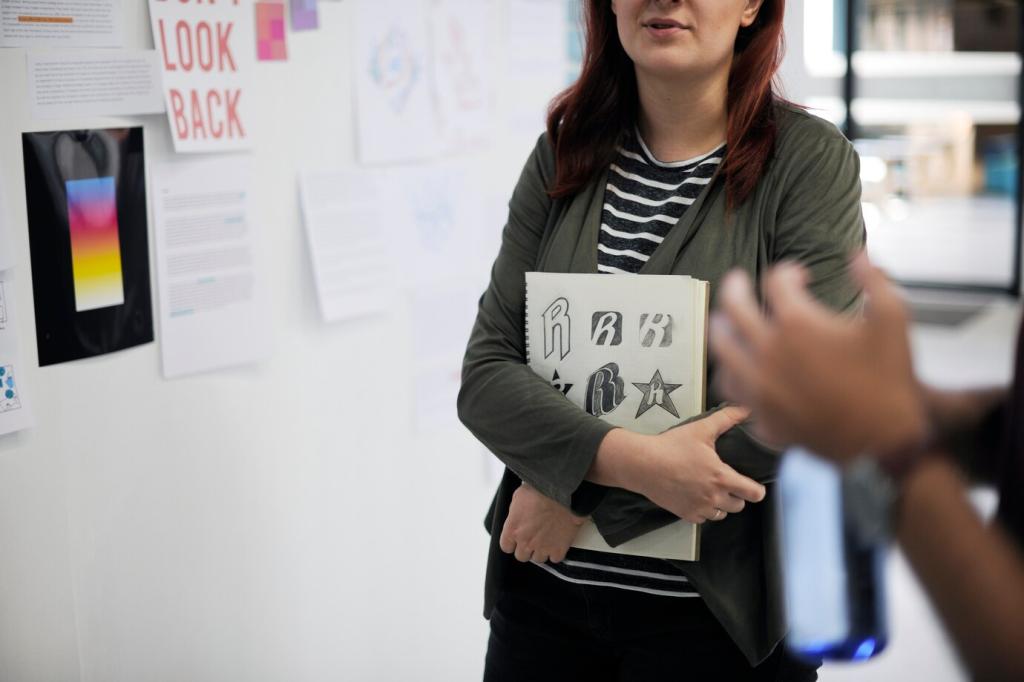Chosen theme: The Role of Copywriting in Shaping Interior Design Brands. Words set the tone, texture, and trust behind every beautiful space. Today we explore how strategic language turns aesthetics into identity—and browsers into believers. Stay with us, share your thoughts, and subscribe for fresh insights.
Why Words Shape Spaces
From Mood to Meaning
Pitch-perfect copy translates material choices and light into felt experiences. Describing oak as “quietly grained” or a palette as “whisper-soft” helps readers imagine touch, temperature, and time of day, turning passive scrolling into sensory immersion and brand affinity.
Differentiation in a Look-Alike Market
When portfolios share similar aesthetics, language becomes the decisive brand signature. Distinct phrasing, confident verbs, and a clear value promise separate minimal from austere, cozy from cluttered, and bespoke from buzzwords, ensuring your studio’s personality doesn’t blur into the feed.
Invitation, Not Instruction
Great interior brand copy doesn’t lecture on taste; it invites curiosity and co-creation. Try lines that open doors—“Imagine breakfast light on stone”—instead of closing statements. Tell us below: which phrase made you feel at home with a brand? Subscribe for more ideas weekly.
Your Voice Palette
Define three to five voice traits—perhaps warm, precise, and editorial. Pair each with do’s and don’ts to guide writers. “Warm” welcomes, not gushes. “Precise” clarifies, not complicates. “Editorial” curates metaphors, never crowds them, ensuring every sentence carries calm authority.
Messaging Pillars That Anchor Strategy
Organize copy around pillars like Material Integrity, Human Comfort, and Responsible Sourcing. These pillars inform headlines, captions, and case studies, so every message ladder aligns with brand purpose. Readers recognize patterns and learn what matters most about your approach over time.
Instead of a resume dump, narrate the moment your practice took shape: the first studio table, the mentor who taught restraint, the client who asked for silence in a noisy city. Specific memories cultivate warmth and signal values beyond polished photography.



Copy Meets Visuals
Move beyond “Kitchen, 2024.” Write captions that offer insight: design intent, constraints, or a tactile detail. “Storage hidden in the island’s shadow line keeps surfaces quiet.” Pair with descriptive alt text for accessibility and findability without breaking the project’s serene tone.
Copy Meets Visuals
Names become memory hooks. Consider evocative but grounded titles—“Eucalyptus Dawn,” “Shoreline Study”—and ensure they serve clarity, not obscurity. The right name can guide palettes, playlists, and press angles while staying true to your brand’s voice and design direction.
Web, UX, and Conversion Language
The Homepage Promise
Open with a crisp value statement that centers your client, not your studio. “We design calm, future-friendly homes where materials work as quietly as they last.” Follow with a minimal explainer and a curated path to projects mapped by need, not internal org charts.
Service Pages That Reduce Friction
Clarify scope with plain, confident language. Explain process stages, deliverables, and collaboration style. Replace jargon with everyday terms and gentle time cues. When clients feel oriented and respected, they reach out with better-fit inquiries and a clearer sense of partnership.
Forms, CTAs, and Reassurance
Microcopy can ease hesitation: “Two-minute form,” “We reply within one business day,” “We welcome first-time renovators.” Pair CTAs with context about next steps. Invite feedback—“Does this form feel easy?”—and watch completion rates rise as anxiety falls.

Keywords with Character
Blend aesthetic vocabulary with intent-driven phrases. Think “Japandi living room storage,” “soft minimal kitchen lighting,” or “pet-friendly modern upholstery.” These terms meet real questions while preserving brand voice, helping your expertise surface exactly when it’s needed.

Local Presence with Poise
For studios serving a region, weave location naturally: neighborhoods, materials sourced nearby, climatic considerations. “Restful interiors for Seattle light.” Authentic locality signals relevance to both humans and search engines without reading like a directory listing.

A Calm Content Cadence
Publish consistently with purpose: project deep-dives, behind-the-build notes, and guides answering client concerns. Invite readers to suggest topics in comments. Subscribe to our updates if you want monthly prompts crafted specifically for interior design brand storytelling and strategy.
Social and Email That Feel Like a Studio Visit

Instagram Carousels with Narrative
Write a one-line story thread across slides—problem, principle, detail, reveal. Pair calm captions with descriptive alt text. Ask a question that invites saves—“Which banquette depth feels right for weekend reading?” Engagement rises when the audience feels consulted, not sold to.

Newsletter as Ongoing Conversation
Subject lines can be soft yet specific: “Where the light lands at 4 pm,” “Choosing stone that quiets a room.” Share lessons learned, not just wins. Invite replies—“What small detail made your home easier this month?” That dialogue shapes future content and services.

Community Prompts and Feedback Loops
End posts with prompts tied to your ethos—material care tips, budget-friendly comfort upgrades, or favorite reading chairs. Encourage readers to comment and subscribe for deeper dives. The more your audience participates, the more your brand voice becomes a shared language.
